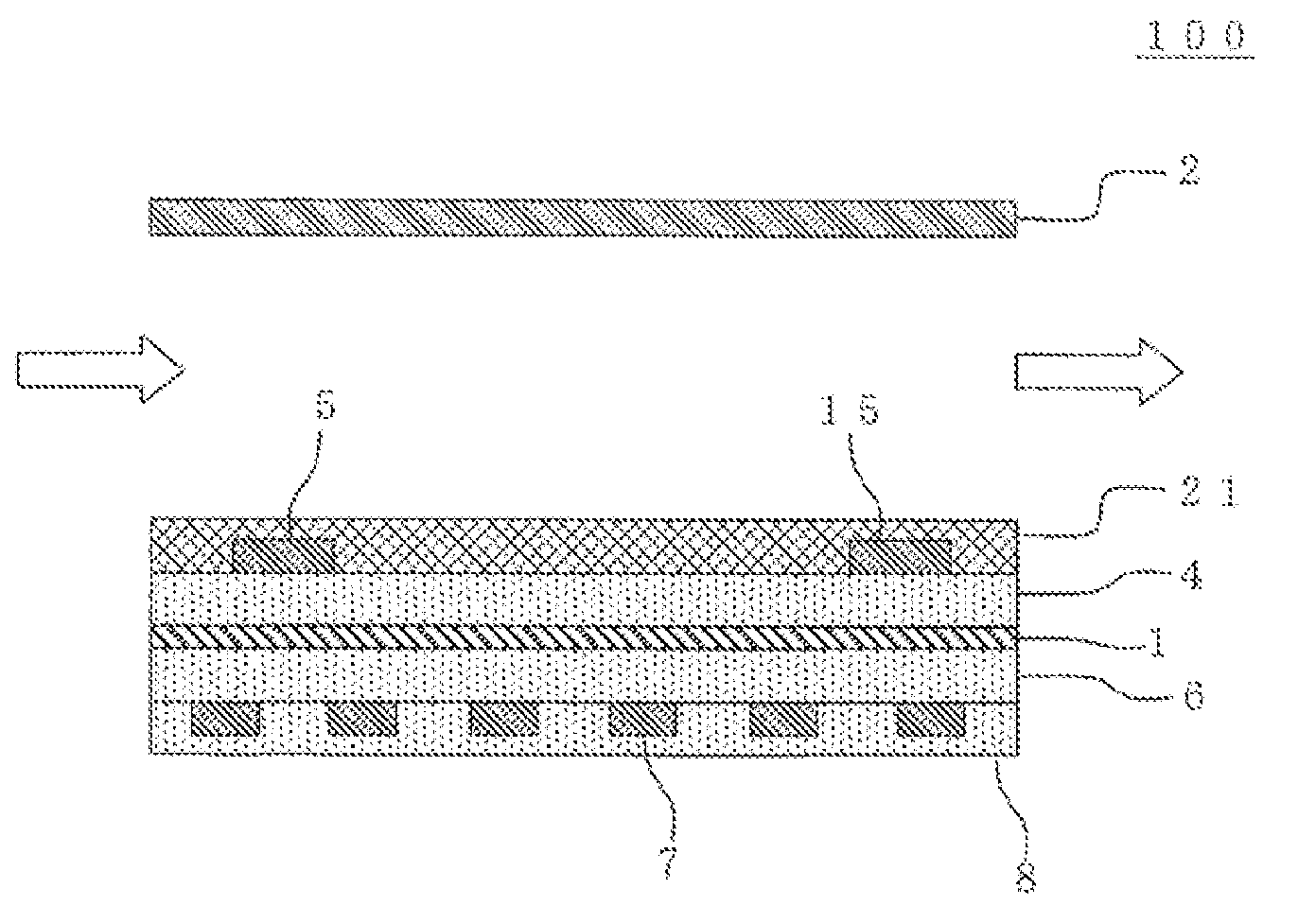Particulate matter detection device
a detection device and particle technology, applied in measurement devices, scientific instruments, instruments, etc., can solve the problems of air pollution, adversely affecting the environment, and increase the amount of particulate matter in the exhaust gas discharged to atmospheric air, so as to reduce the amount of discharged particulate matter, reduce the measurement error, and prevent air pollution
- Summary
- Abstract
- Description
- Claims
- Application Information
AI Technical Summary
Benefits of technology
Problems solved by technology
Method used
Image
Examples
example 1
Preparation of Forming Material
[0085]Alumina was used as a ceramic material, polyvinyl butyral was used as a binder, di-2-ethylhexyl phthalate was used as a plasticizer, sorbitan trioleate was used as a dispersant, and an organic solvent (xylene:butanol=6:4 (mass ratio)) was used as a dispersion medium. These materials were placed and mixed in an alumina pot, to prepare a slurry-like forming material for preparing a green sheet. As to the used amounts of the materials, with respect to 100 parts by mass of alumina, 7 parts by mass of binder, 3.5 parts by mass of plasticizer, 1.5 parts by mass of dispersant and 100 parts by mass of organic solvent were used.
[0086]Next, the obtained slurry-like forming material for preparing the green sheet was stirred under a reduced pressure, defoamed and prepared so as to have a viscosity of 4 Pa·s. The viscosity of the slurry was measured by a B-type viscosity meter.
[0087](Formation Processing)
[0088]Next, the slurry-like forming material obtained b...
example 2
[0099]A particulate matter detection device was prepared in the same manner as in Example 1 except that a protective film was what was doped with a metal. The protective film doped with the metal was prepared as follows. The preparation method of the protective film was similar to that of Example 1, but silica and titania were used as the materials of the protective film, and a blend ratio of titania (TiO2) with respect to base silica (SiO2) in terms of Ti atoms was 5 mol %. The volume resistivity of the protective film was 108 Ωcm. In the same manner as in Example 1, sensitivity measurement and corrosion test were performed. Results are shown in Table 1.
example 3
[0100]A particulate matter detection device was prepared in the same manner as in Example 1 except that a protective film was formed of two layers of an insulating protective film and a low resistance film. The protective film formed of the two layers of the insulating protective film and the low resistance film was prepared as follows. The insulating protective film was formed by screen printing on the surface of a portion of a green laminate on which measurement electrodes 5, 15 were printed, and the green laminate was dried and fired in the same manner as in Example 1, followed by forming the low resistance film on the surface of the insulating protective film by CVD. The screen printing was performed by using trade name TSU4060 manufactured by Seritech Co. Moreover, the CVD was performed by using trade name Super 7 manufactured by Universal Technics Co., Ltd. The material of the insulating protective film was silica, and the material of the low resistance film was diamond-like c...
PUM
| Property | Measurement | Unit |
|---|---|---|
| volume resistivity | aaaaa | aaaaa |
| volume resistivity | aaaaa | aaaaa |
| volume resistivity | aaaaa | aaaaa |
Abstract
Description
Claims
Application Information
 Login to View More
Login to View More - R&D
- Intellectual Property
- Life Sciences
- Materials
- Tech Scout
- Unparalleled Data Quality
- Higher Quality Content
- 60% Fewer Hallucinations
Browse by: Latest US Patents, China's latest patents, Technical Efficacy Thesaurus, Application Domain, Technology Topic, Popular Technical Reports.
© 2025 PatSnap. All rights reserved.Legal|Privacy policy|Modern Slavery Act Transparency Statement|Sitemap|About US| Contact US: help@patsnap.com


